  |
|
About Mission 2013:
 The Massiah Foundation-Terrascope Field Trip to Abu Dhabi took place during spring break in 2010. You can read their blog. Carbon Sequestration: Can it Work? Freshmen in Mission 2013/Terrascope presented their proposal on December 3, 2009 Watch the on demand video of the presentation here. The final student website is located here. Solving Complex Problems (12.000) is designed to provide students the opportunity to work as part of a team to propose solutions to a complex problem that requires an interdisciplinary approach. For the students of the class of 2013, 12.000 or Mission 2013, will revolve around the issues associated with what we can and must do about the steadily increasing amounts CO2 in Earthís atmosphere. There is little question that Earthís climate is changing and there is good evidence that warming can be tied to the huge amounts of greenhouse gases that we have been pumping into the atmosphere since the Industrial Revolution. Our consumption of fossil fuels (oil, gas, coal) that fuel our ever expanding economies is a large part of the problem and we are grappling to understand all of the climate feedback loops and consequences of higher CO2 and warmer temperatures. 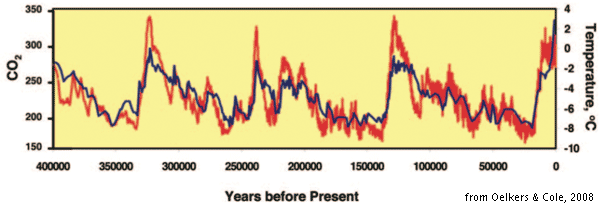 A small minority deny a link between human activities, CO2, and global temperature and point to pre-industrial and older times when the Earth experienced large fluctuations in CO2 and climate. This is indeed the case and in the past, animals and plants have adapted, often by extinction and/or migration. However, human domination of the planet is unlike any time in earth history and the large cities that we have organized ourselves into do not lend themselves to adaptation. As atmospheric CO2 increases global temperatures and sea-level will rise, patterns of precipitation and crop yields will shift, ocean chemistry and circulation patterns will be changed, and these will in turn effect billions of people. It is clear that we are at a cross roads and that our continued prosperity hinges on stabilizing greenhouse gas concentrations. With human population exceeding 6.7 billion and projections of 10 billion by the end of the century, fossil fuel consumption and CO2 emissions will continue to increase and the problem is here to stay. 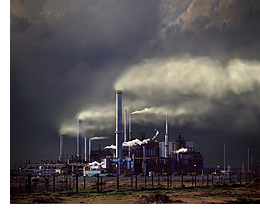 For the students of the class of 2013, 12.000 or Mission 2013, will be tasked with solving the large and complex problems necessary to sequester enough carbon to stop the steady increase of atmospheric CO2 and to stabilize it. While reducing or eliminating greenhouse gas emissions is a good strategy that must be pursued, it will not be enough and we must also find ways of removing CO2 from the atmosphere and sequestering it in geologically stable reservoirs. There are many possible ways to sequester CO2, including storing in porous rock formations, the deep ocean, forests and soils, and precipitating carbonate minerals to name a few. However, the capture, transport, and sequestration of CO2 will be logistically complex, incredibly expensive, and require unprecedented international cooperation. For the students of the class of 2013, 12.000 or Mission 2013, will be tasked with solving the large and complex problems necessary to sequester enough carbon to stop the steady increase of atmospheric CO2 and to stabilize it. While reducing or eliminating greenhouse gas emissions is a good strategy that must be pursued, it will not be enough and we must also find ways of removing CO2 from the atmosphere and sequestering it in geologically stable reservoirs. There are many possible ways to sequester CO2, including storing in porous rock formations, the deep ocean, forests and soils, and precipitating carbonate minerals to name a few. However, the capture, transport, and sequestration of CO2 will be logistically complex, incredibly expensive, and require unprecedented international cooperation.
Your Mission is to propose an integrated global solution to the rapid rise in atmospheric CO2 that will stabilize concentrations at an economically viable and internationally acceptable level. Mission 2013 will focus on the issues associated managing our planetís atmosphere. Attempting to control the concentrations of greenhouse gases is an enormous, complex problem that will requite a major interdisciplinary, international, innovative effort unlike anything ever attempted in human history 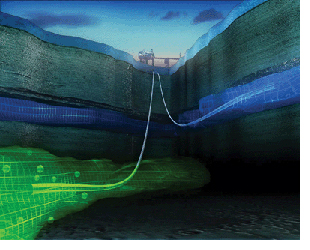 The stakes are high and include the health of our oceans. As we learned in Mission 2011, we depend a great deal on the health of the oceans. Although progress has been made in slowing down over-fishing, a severe problem related to excess CO2 is that it is changing the pH of the oceanís surface waters. The pH of surface water has already dropped by about 0.1 pH unit and projections of a decline by 0.3-0.4 units by the end of the century have been made. Such a drop will have a dramatic negative effect on organisms that build skeletons using CaCO3, such as corals, which in turn will affect whole ecosystems and the food chain. The stakes are high and include the health of our oceans. As we learned in Mission 2011, we depend a great deal on the health of the oceans. Although progress has been made in slowing down over-fishing, a severe problem related to excess CO2 is that it is changing the pH of the oceanís surface waters. The pH of surface water has already dropped by about 0.1 pH unit and projections of a decline by 0.3-0.4 units by the end of the century have been made. Such a drop will have a dramatic negative effect on organisms that build skeletons using CaCO3, such as corals, which in turn will affect whole ecosystems and the food chain.
In addition to managing CO2 concentrations, many other large-scale geo-engineering projects have been proposed including injecting sulfur dioxide into the stratosphere where on oxidation it will form aerosols that will effectively change the planetís albedo and cool the planetóand this is not the wildest idea out there! Students in Mission will learn about the global carbon cycle, the net sources and sinks of CO2 and how we can preserve the planet for future generations. As they say, failure is not an option. Mission 2013 is also part of the Terrascope program and the issues associated with CO2 sequestration the year long theme of Terrascope. By enrolling in 12.000 you become part of the Terrascope program and community, even if you do not continue in the Spring. Spring Field Trip: During spring break in March of 2010 we will take a field trip to explore the problems and issues associated with CO2 sequestration and the design of a carbon neutral approach to human existence. It will likely involve international travel and we will keep you updated. 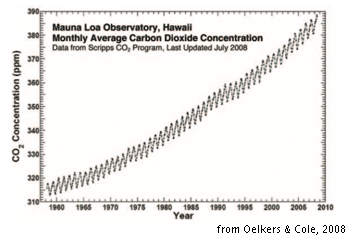 About 12.000: About 12.000:"Solving Complex Problems" (12.000) is a nine-unit, Fall-semester subject designed to provide freshmen with the opportunity to work as part of an "imagineering" team to design a viable solution to a complex problem that requires an interdisciplinary approach. It is also known as Mission 2013 -Carbon sequestration. Each year's class explores a different problem in detail through the study of complimentary case histories and the development of creative solution strategies. It includes training in web site development, effective written and oral communication, and team building. Initially developed with major financial support from the Alex and Britt d'Arbeloff Fund for Excellence in MIT Education, 12.000 is designed to enhance the freshman experience by helping students develop contexts for other subjects in the sciences and humanities, and by helping them to establish learning communities that include upperclassmen, faculty, MIT alumni, and professionals in science and engineering fields. Why Mission? The Mission class offer freshman a completely different way to learn. In contrast to the core classes that rely on lectures and problem sets, Mission attempts to teach students how to think about solving complex problems. Students in Mission are independent, largely self-directed, and interactive. They learn how to build teams and develop solutions that require teamwork between scientists and engineers. Mission students will learn that many problems are just too big and complex to be solved by any one person or discipline and must involve integration. At the end of the class the students of Mission will have developed new and innovative solutions to an "unsolvable" problem and been exposed to a variety of different disciplines. 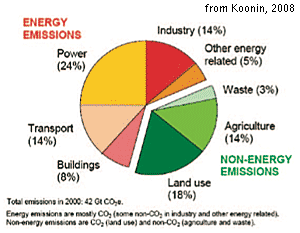 History of the Class History of the ClassProfessor Kip Hodges, now at Arizona State University, conceived of the course and supervised it for the first six years. It was offered first in Fall 2000, when the assignment (Mission 2004) was to develop a viable mission plan for the exploration of Mars with the aim of finding evidence for the present or past existence of life. The assignment for Fall 2001 (Mission 2005) was to design undersea research stations for both coral reef and abyssal environments. Fall of 2002 (Mission 2006) charged students with developing a strategy for monitoring and preserving the Amazon Rainforest. As in previous years, the students in Mission 2006 described their final design in a content-rich web site and an oral presentation in front of a panel of international experts. Mission 2007 was focused on Arctic National Wildlife Refuge (ANWR), Mission 2008 - Galapagos, Mission 2009 -Tsunamis and Mission 2010 - Saving N'awlinz, Mission 2011 - Saving our oceans, Mission 2012 - Clean water. |
 |
  |